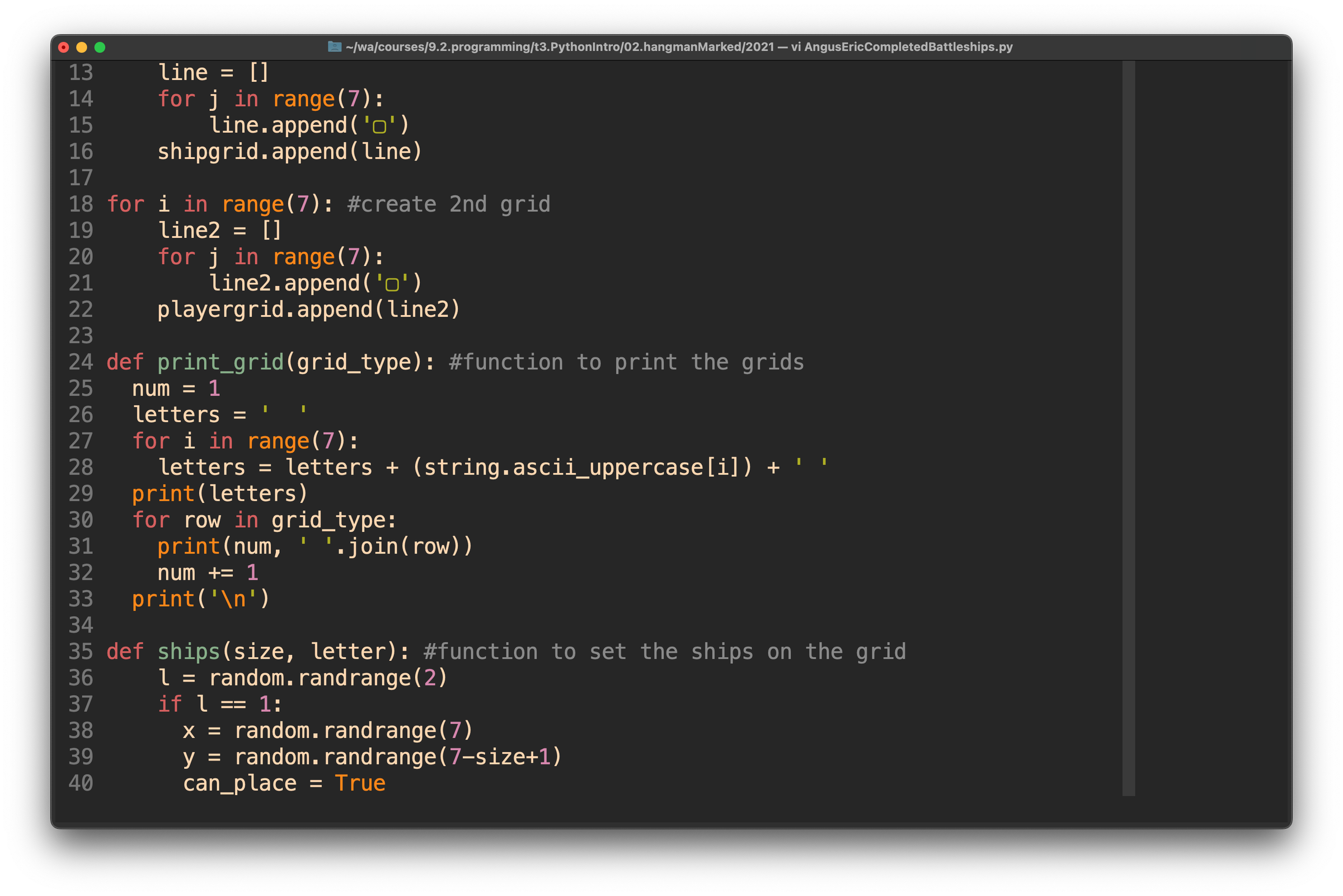Programming
TECHNOLOGY FACULTY

Programming
TECHNOLOGY FACULTY
| 🎓 Course Type | Elective |
|---|---|
| 🧩 Units | 1 - 2 |
| 🗓 Timing | Unit 1 in Year 9 or 10, Unit 2 in Year 9 or 10 |
| ⏱ Hours per week | 3 |
| 📚 Prior Experience | Appreciated but not required |
| ✏️ Selection | Possible to commence study with any of the above units |
| 🧭 Future Pathways | Computer Science TCE or IB and any future digital career |
This two-semester course is for Year 9 and Year 10 students wishing to gain experience in programming. It is particularly relevant to students who wish to develop a fundamental understanding of digital technology. Using a design-make-appraise process, students will learn to design and create digital solutions using HTML, JavaScript and Python . This course will foster a range of relevant skills for students who are interested in understanding digital systems and Computer Science.
Unit 1 introduces computer programming concepts through the development of dynamic web pages. Students will examine the history of the development of the internet and the fundamental systems underlying this ubiquitous technology. Students then gain a hands-on understanding of programming concepts by producing a range of javascript programs embedded in HTML. They also learn about the basic principles of computing and networking systems. Students develop their skills through a combination of smaller programming tasks and larger scale projects, designing and constructing dynamic online resources to communicate their knowledge and ideas.
Unit 2 introduces students to formal programming constructs in the Python programming language. Python is currently the most in demand programming language in the world. It is the preferred development language at Google, and Python programming skills are highly sought after throughout the information technology industry. Students will learn to use this powerful and flexible language to solve a range of challenging problems, developing a solid practical understanding of concepts including variables, switching, loop controls and the use of functions and parameters to implement complex patterns of input/output. As a culminating task, students will apply their skills to design and implement a standalone programming project.
For extension in this subject area, see also: